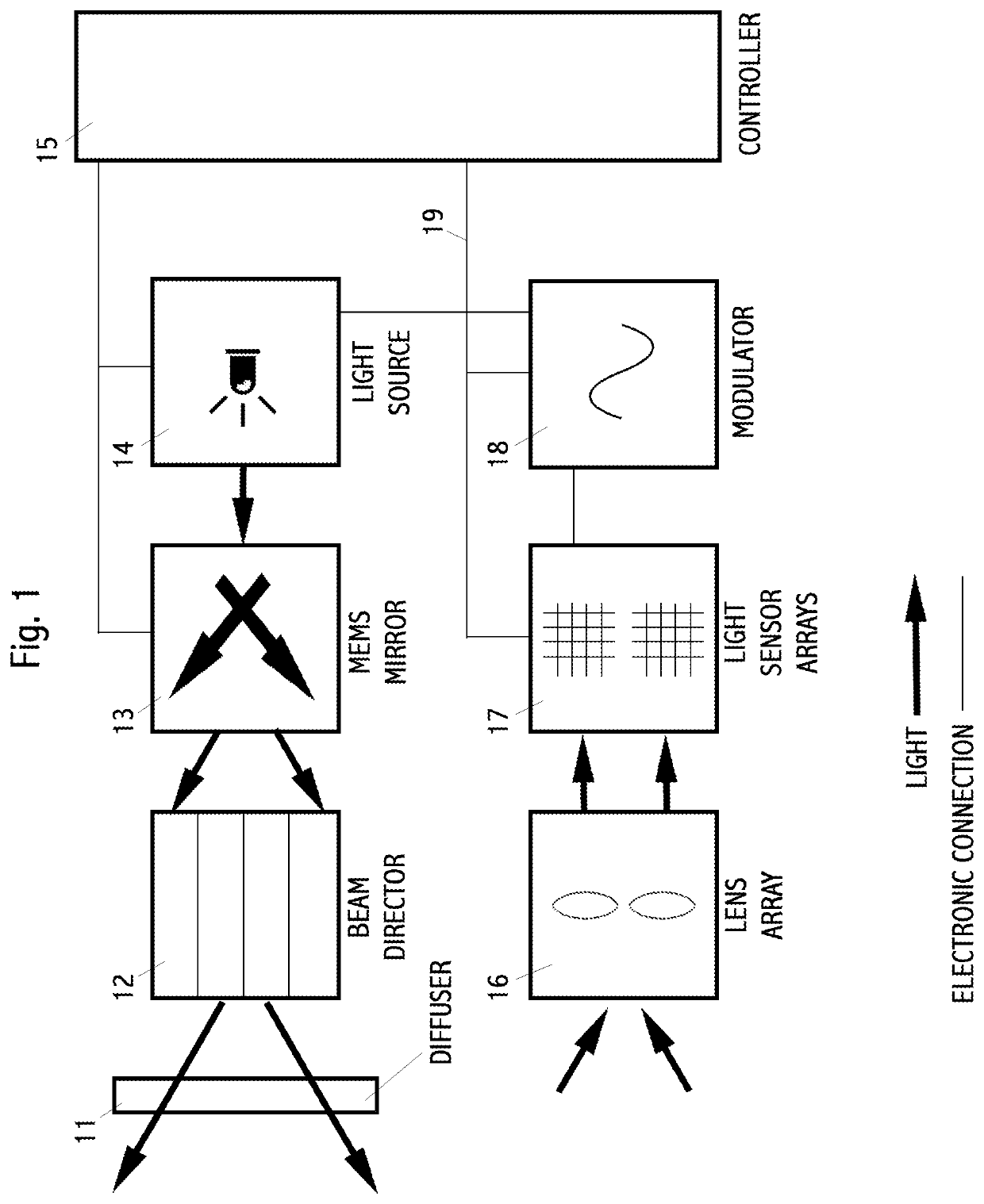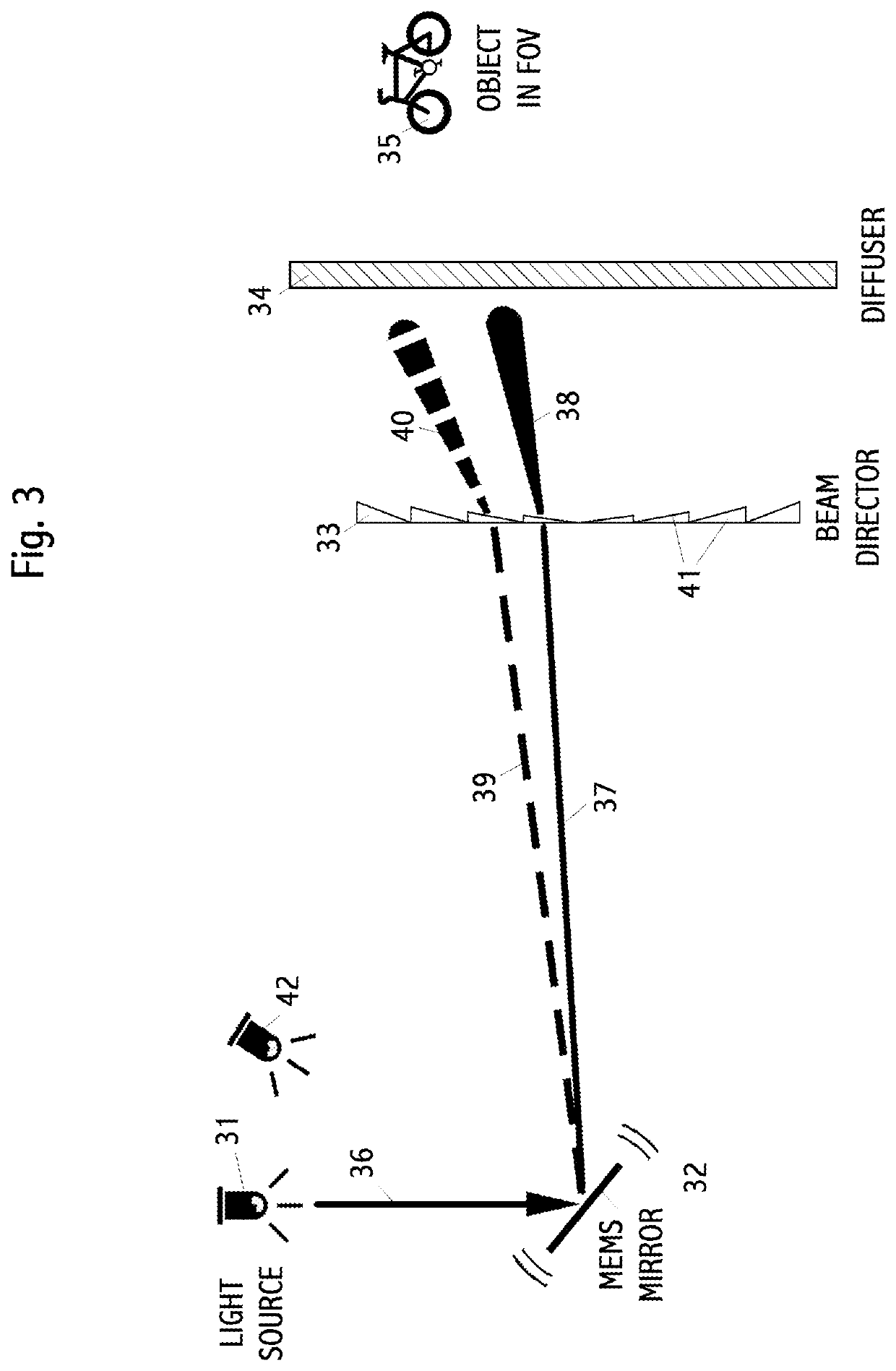Device and method of optical range imaging
a technology of optical range imaging and optical range, applied in measurement devices, using reradiation, instruments, etc., can solve the problems of lack of dynamic imaging flexibility in the prior art, relative unreliability of rotating or resonant mechanical elements, and cost, size, weight,
- Summary
- Abstract
- Description
- Claims
- Application Information
AI Technical Summary
Benefits of technology
Problems solved by technology
Method used
Image
Examples
Embodiment Construction
[0024]Scenarios, options and examples are non-limiting embodiments.
[0025]The exact acronym for LIDAR varies in the art. It may be Laser Detection And Ranging; Light Detection And Ranging; LIght Detection And Ranging; a combination of the words light and radar. Our usage herein is LIght Detection And Ranging; however the exact acronym is non-limiting. Other terms for LIDAR include, “3D optical ranging.”
[0026]Turning first to FIG. 1, we see a schematic of major elements in an embodiment. The upper half of the Figure is primarily elements in the illumination subsystem and the lower half of the Figure is primarily elements in the imaging subsystem. To the right is a controller comprising control electronics, such as a processor, data and program memory, input / output interfaces, power supplies, and the like. 14 shows a continuous wave, modulated light source such as one or more LEDs, solid-state lasers, or other modulated light sources. A modulated light source may use an amplitude modul...
PUM
 Login to View More
Login to View More Abstract
Description
Claims
Application Information
 Login to View More
Login to View More - R&D
- Intellectual Property
- Life Sciences
- Materials
- Tech Scout
- Unparalleled Data Quality
- Higher Quality Content
- 60% Fewer Hallucinations
Browse by: Latest US Patents, China's latest patents, Technical Efficacy Thesaurus, Application Domain, Technology Topic, Popular Technical Reports.
© 2025 PatSnap. All rights reserved.Legal|Privacy policy|Modern Slavery Act Transparency Statement|Sitemap|About US| Contact US: help@patsnap.com



